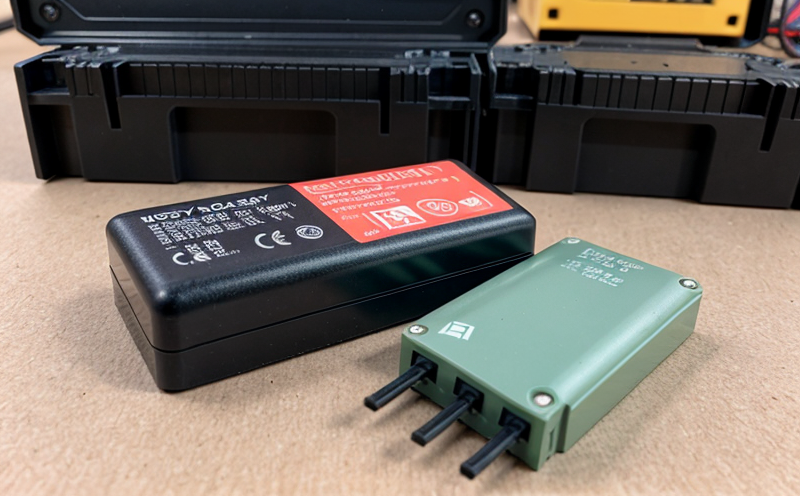DIN EN 62259 Nickel-Cadmium Battery Pack Performance Testing
The DIN EN 62259 standard is specifically designed to ensure that nickel-cadmium (NiCd) battery packs meet the highest quality and reliability standards. This testing protocol focuses on evaluating the performance characteristics of NiCd batteries in various operational conditions, including charge-discharge cycles, temperature stress tests, and capacity retention under different environmental stresses.
The primary goal of this standard is to provide a framework for manufacturers, suppliers, and end-users to ensure that NiCd battery packs are safe, reliable, and perform consistently across all intended applications. The testing methodology outlined in DIN EN 62259 encompasses multiple parameters such as internal resistance measurement, charge acceptance, self-discharge rate, and capacity retention after multiple cycles.
Internal resistance is a critical parameter that affects the battery's performance under load conditions. Measuring this at regular intervals helps identify any degradation or malfunction early on. Charge acceptance tests assess how efficiently the battery absorbs current during charging, which can vary significantly among different types of NiCd batteries. Self-discharge rate measures the percentage of charge lost over time without external power supply, crucial for understanding battery shelf life.
Capacity retention is one of the most important aspects of NiCd battery pack performance testing. It refers to the ability of a battery to maintain its rated capacity after specified cycles and environmental stress conditions. This metric is particularly relevant when considering long-term use in critical applications where reliability is paramount, such as medical devices or emergency power supplies.
The DIN EN 62259 standard also includes rigorous temperature cycling tests aimed at simulating real-world usage scenarios where batteries might be exposed to extreme temperatures. These tests help identify any thermal stability issues that could lead to reduced performance or safety hazards over time. By adhering strictly to these protocols, manufacturers can ensure their products meet stringent international standards and provide consistent quality across various applications.
Given the unique characteristics of NiCd batteries compared to other types like lithium-ion (Li-ion), it's essential to tailor testing methods specifically for this technology. For instance, Li-ion batteries have different chemical compositions leading them to behave differently under similar stress conditions. Therefore, understanding these differences is crucial when developing appropriate test procedures.
Manufacturers who adopt DIN EN 62259 as part of their quality assurance process benefit from enhanced product reliability and improved customer satisfaction. Compliance with this standard not only enhances brand reputation but also ensures compliance with regulatory requirements in numerous markets around the world.
Why It Matters
The importance of adhering to DIN EN 62259 cannot be overstated, especially given today's increasingly stringent safety regulations and consumer expectations regarding product quality. By implementing this standard during manufacturing processes, companies can significantly reduce the risk of product failures that could result in significant financial losses and reputational damage.
Moreover, compliance with DIN EN 62259 helps establish trust between manufacturers and their customers by demonstrating a commitment to excellence throughout every stage of production. This transparency fosters long-term relationships built on reliability and integrity, which are essential components of successful business operations.
In addition to enhancing customer satisfaction, meeting these stringent standards also opens up new opportunities for market expansion into regions that mandate compliance with international safety standards like DIN EN 62259. As global markets become more interconnected, adhering to such widely recognized guidelines becomes increasingly important for maintaining a competitive edge in the industry.
Industry Applications
| Application | Description |
|---|---|
| Military Electronics | Critical systems such as communication devices and navigation equipment require reliable power sources that can withstand harsh environmental conditions. |
| Medical Devices | Battery packs used in medical applications must be extremely dependable to ensure patient safety during surgeries or life-saving treatments. |
| Civilian Aeronautics | The aviation industry places high demands on battery performance and safety due to the critical nature of aircraft operations. |
Beyond these specific sectors, nickel-cadmium batteries find application in a wide range of industries where reliability and performance are crucial. Their ability to handle high current demands makes them ideal for backup power systems that need to provide continuous operation even during power outages.
Portable medical equipment like heart monitors or defibrillators also rely on NiCd batteries for consistent performance, ensuring that these devices function correctly when needed most. Telecommunications infrastructure uses these robust battery packs to support critical communication networks in various environments.
Quality and Reliability Assurance
- Charging Efficiency: Ensuring batteries charge properly is vital for maintaining their overall health and longevity.
- Discharge Characteristics: Understanding how a battery discharges over time helps predict its useful life span accurately.
The quality assurance process begins with thorough pre-testing of each individual cell before assembling them into packs. This step ensures that only cells meeting strict criteria are used in the final product, thereby enhancing overall pack performance and reliability. Once assembled, the complete battery pack undergoes further rigorous testing to verify compliance with DIN EN 62259 requirements.
Testing procedures include both static tests (measuring internal resistance) and dynamic tests (evaluating charge-discharge cycles). Static measurements provide valuable insights into a battery's baseline condition, while dynamic evaluations assess how well the pack performs under real-world usage scenarios. Additionally, accelerated aging tests simulate long-term exposure to environmental stresses like heat or cold, helping identify potential weaknesses early on.
Accurate and detailed reporting is another key component of ensuring quality and reliability. Comprehensive reports detailing all test results allow manufacturers to pinpoint areas needing improvement while providing evidence supporting compliance with relevant standards. These documents serve as essential tools for continuous improvement efforts aimed at enhancing product performance over time.





